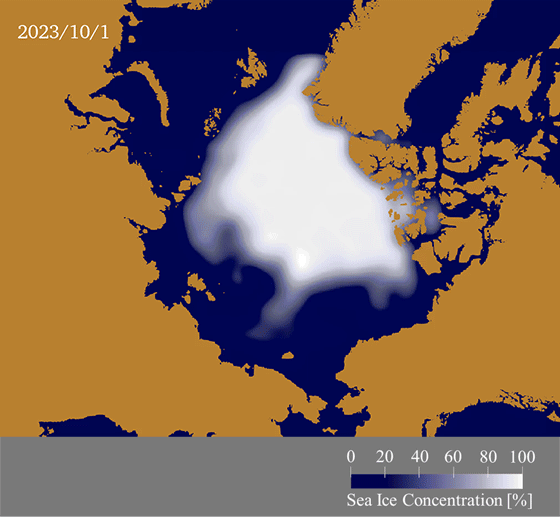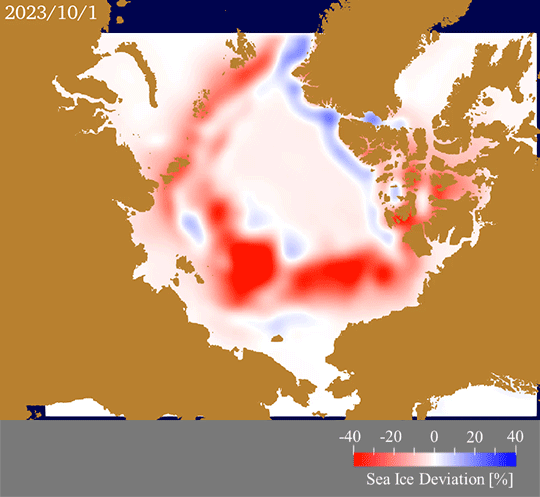2023 Fall report
Arctic Sea Ice Information Center, Noriaki KIMURA (Atmosphere and Ocean Research Institute, The University of Tokyo)

- Sea ice throughout the Arctic region will advance at a slower speed than the normal pace.
- Sea routes of Russian side will close around October 15. The route of Canadian side except for Canadian archipelago will close around October 22.


Arctic sea ice area reached its minimum in the middle of September and started advancing. As shown in Figure 3, sea ice around the Laptev Sea to the East Siberian Sea, the Chukchi Sea, and the Beaufort Sea, where sea ice retreated to a greater extent than normal years during the summer, will advance at a slower speed than normal years. Sea ice in the Kara Sea and Barents Sea will advance at a slower speed than normal years since the sea-ice free period was longer than normal. The ice cover will reach the shore and close the sea routes around October 15 on the Russian side and around October 22 on the Canadian side except for Canadian archipelago.
The sea ice extent in the Arctic Ocean tends to increase in the opposite pattern to that of the decrease in summer. The faster the ice disappears, the slower the ice increases in fall. Thus, there is a correlation between the speed of sea ice retreat in summer and the sea ice concentration during the fall expansion (see 2017 Fall report for details). This is thought to be because the earlier sea ice disappears the longer the sea surface gets warmed, and it slows down the sea ice formation in fall.
The prediction has based on the correlation between the number of days when the sea ice concentration was less than 15% from May 1 to August 31 and the sea ice concentration after October 1. The data for 18 years from 2003 to 2022 are used for the calculation.
For this prediction, we used the sea ice data from satellite microwave sensors AMSR-E and AMSR2.
You can also check the daily forecast and sea ice age data (daily and yearly) on Arctic Data archive System (ADS) at National Institute of Polar Research.
If you have any questions about satellite monitoring of the Arctic Ocean, sea ice forecasting, or the forecasting methods used here, please contact the Arctic Sea Ice Information Center(sea_ice@nipr.ac.jp)
The sea ice forecast and its basic research were started in GRENE, continued to ArCS Project, and has been conducted in ArCS II Project since 2020.


